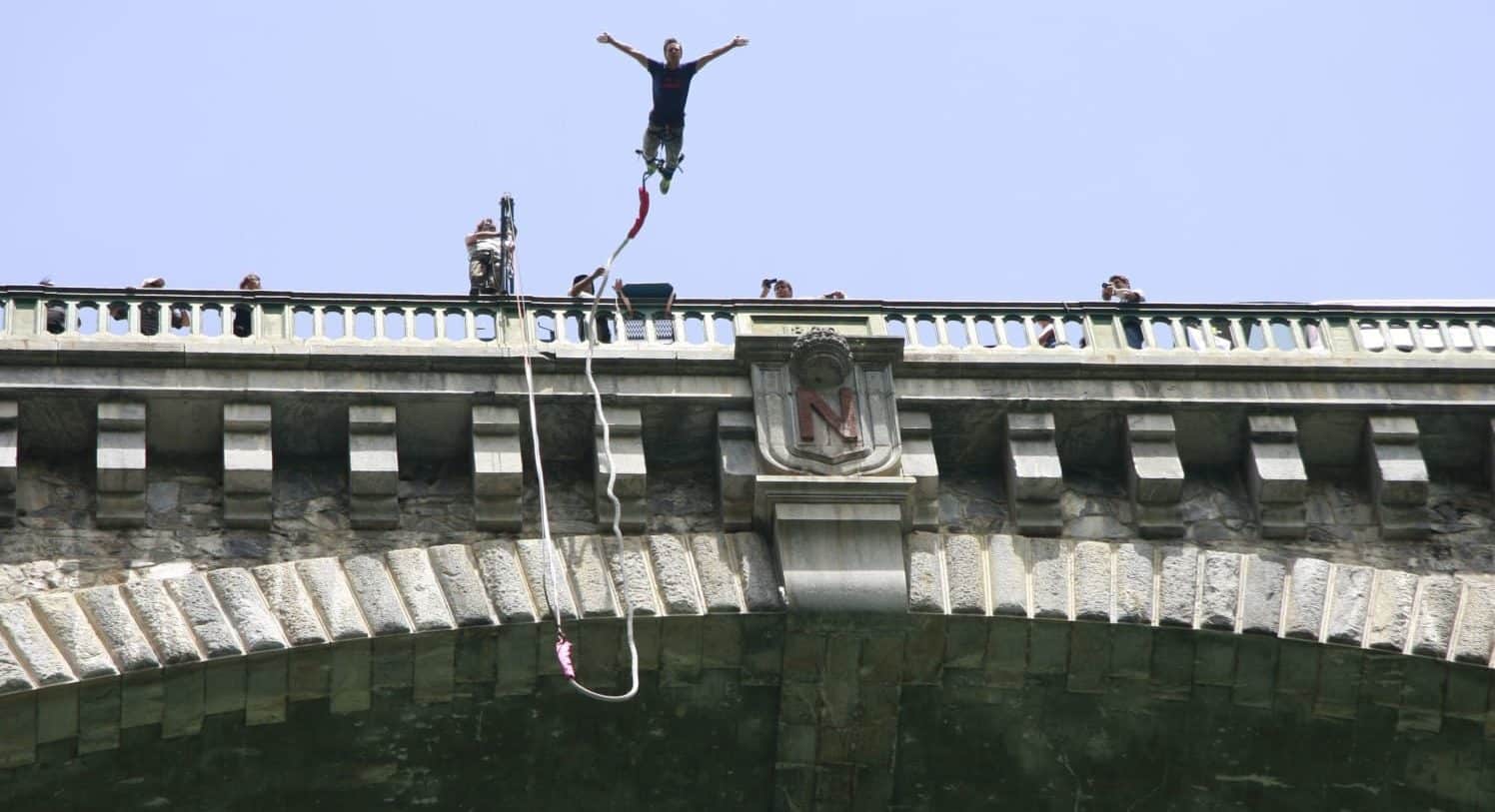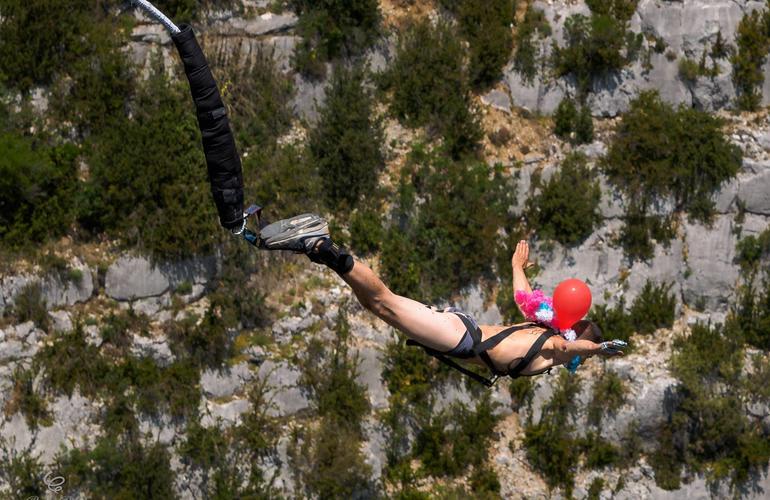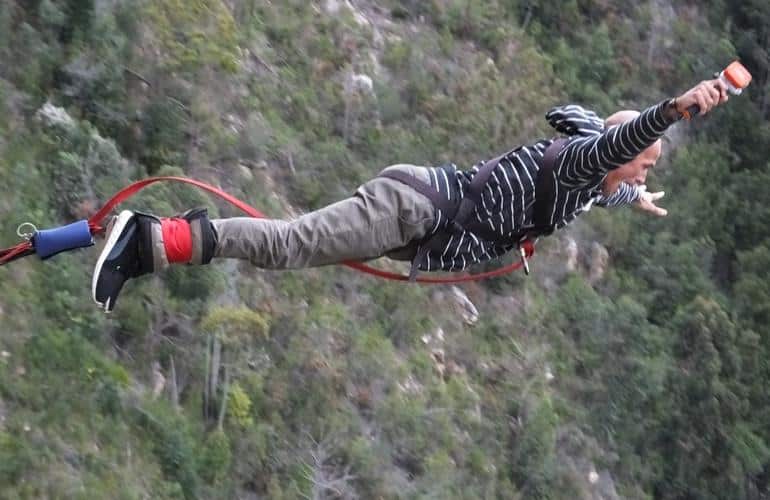Bungee jumping: everything you need to know before jumping!

There's nothing easier and more accessible to get a quick (and crazy) thrill.
Also known as benji, bungie, bungy jumping or bungee jumping, bungee jumping is, as its name suggests, a simple jump into the void with a bungee cord attached to the ankles or torso. An unusual activity, more or less extreme, but which is not considered a sport because it does not require any physical training or particular technique. It is simply a matter of throwing yourself into the void... and being sure that you are well attached before launching yourself anyway. The rope is used to slow down and then stop the fall, and fortunately you would otherwise crash at the bottom...

The aim is to easily get the thrill of free fall followed by successive ascents. Once the jump is done, you become a real human yoyo with great sensations. With the effects of vertigo due to the height, this activity is a first step if you want to try skydiving or any other aerial sport. Note that unlike parachute jumping, this jump in the void hanging from a rope does not require a medical certificate issued by a doctor (except for 55/60 years old depending on the establishment). The advantage of this modern leisure activity is that it can be done by everyone, provided that you are in good physical condition, have a bit of courage and a good heart. Because once you're up there, it's best not to think about it because it's too late. However, if you have a heart condition or problems with your back, neck or spine, it is better not to take the risk. Bungy jumping is allowed from the age of 15, with parental permission for minors. The minimum weight is often 50 kg and the maximum 130 kg. As far as safety is concerned, it is good to know that the equipment is systematically checked to ensure that the jumps take place without any danger. The safety margin of a jump in relation to the ground is 20 metres, which leaves little chance that you will touch the ground! It should also be noted that the bungee cords are destroyed after 150 jumps (or 6 months) even though it has been proven that they can withstand more than 1500 jumps.

A word of advice: empty your pockets before you take the plunge because if your mobile phone falls from up there, it's not attached to a rubber band and no gum either because you'll swallow it with the speed of the dive.
If you're going to take a risk in life, then start with this jump and maybe it will help you with something else or with a crucial choice you have to make. The unpleasant feeling of seeing death in the face is soon replaced by the exhilarating feeling of flying and will leave you with lasting memories that you will want to share for the rest of your life.

The most important thing is to choose the right spot. The longer the jump, the better, so we advise you to jump from a bridge, a cliff or a crane, but from a good height to fully appreciate the landscape and the sensations. If you are rather shy about this activity, start with a short jump, like the Viaduct of Saint Paul Le Jeune in Ardèche with a jump of only 37 meters. If it's a bachelorette party, the spot of the bridge of the bride near Nice (France) seems ideal.
And once you've tried it and understood that it's safe, you'll be hooked and may want to explore other places. It is also an opportunity to discover majestic landscapes such as the Victoria Falls in Africa or Kathmandu in Nepal for example. And if you become a bungee jumping fan then you can try the highest jump in the world on the Bloukrans Bridge in South Africa with no less than 216 meters of altitude!

Popularised by the New Zealander Alan John Hackett in the 1980s (notably with his famous illegal jump from the Eiffel Tower in June 1987), this discipline has continued to evolve and become better known over time. With some variants such as the pendulum jump (also called rope swing or pendulum jump) which consists in jumping with two ropes from a bridge but in a staggered way in order to make a jump which has the shape of an oscillating pendulum, it differs from bungee jumping by its partly semi-circular trajectory of swing and not purely vertical. There is also the swingline which consists in jumping from a slackline and many other things like bungee jumping from a springboard while sledging, skiing, cycling or running... In short there are many ways to get into the air with this original activity if you are not afraid of the cold!
And as a bonus, a small photo of Kelly Slater taking the plunge off the Bloukrans Bridge in South Africa.
